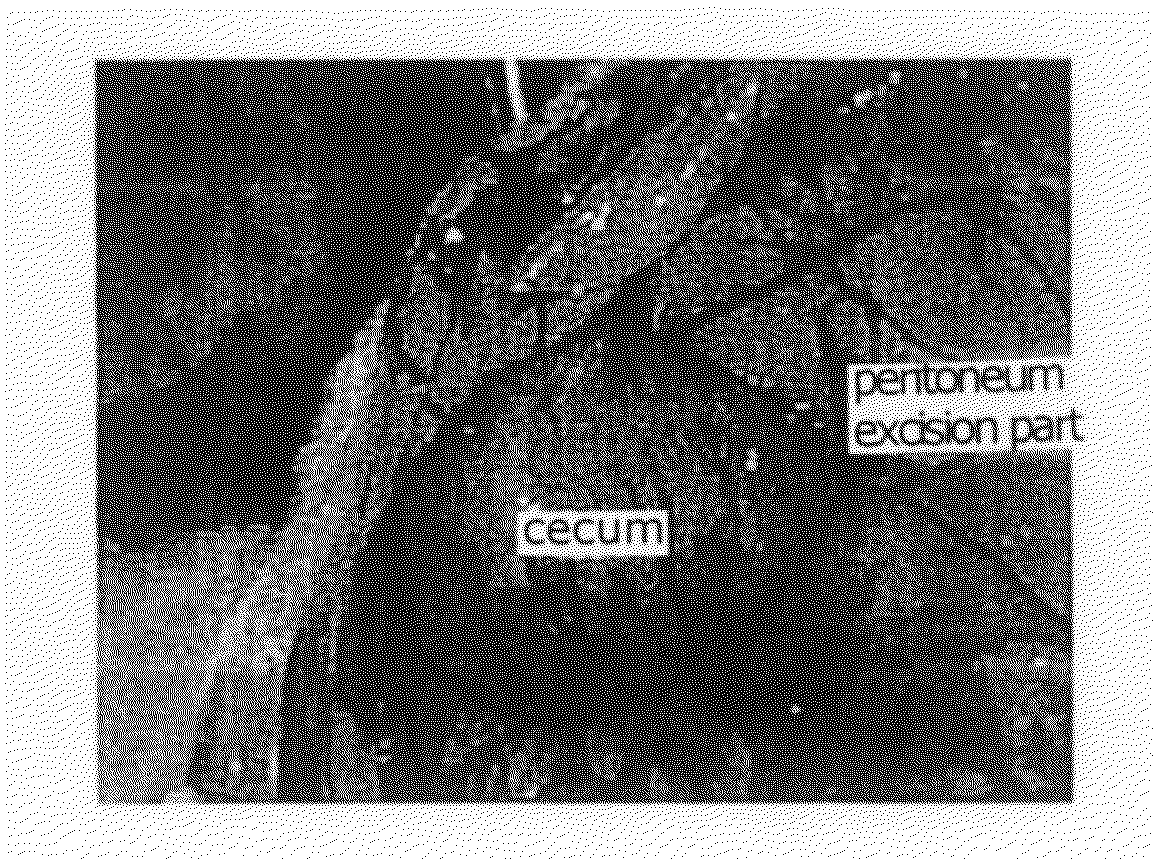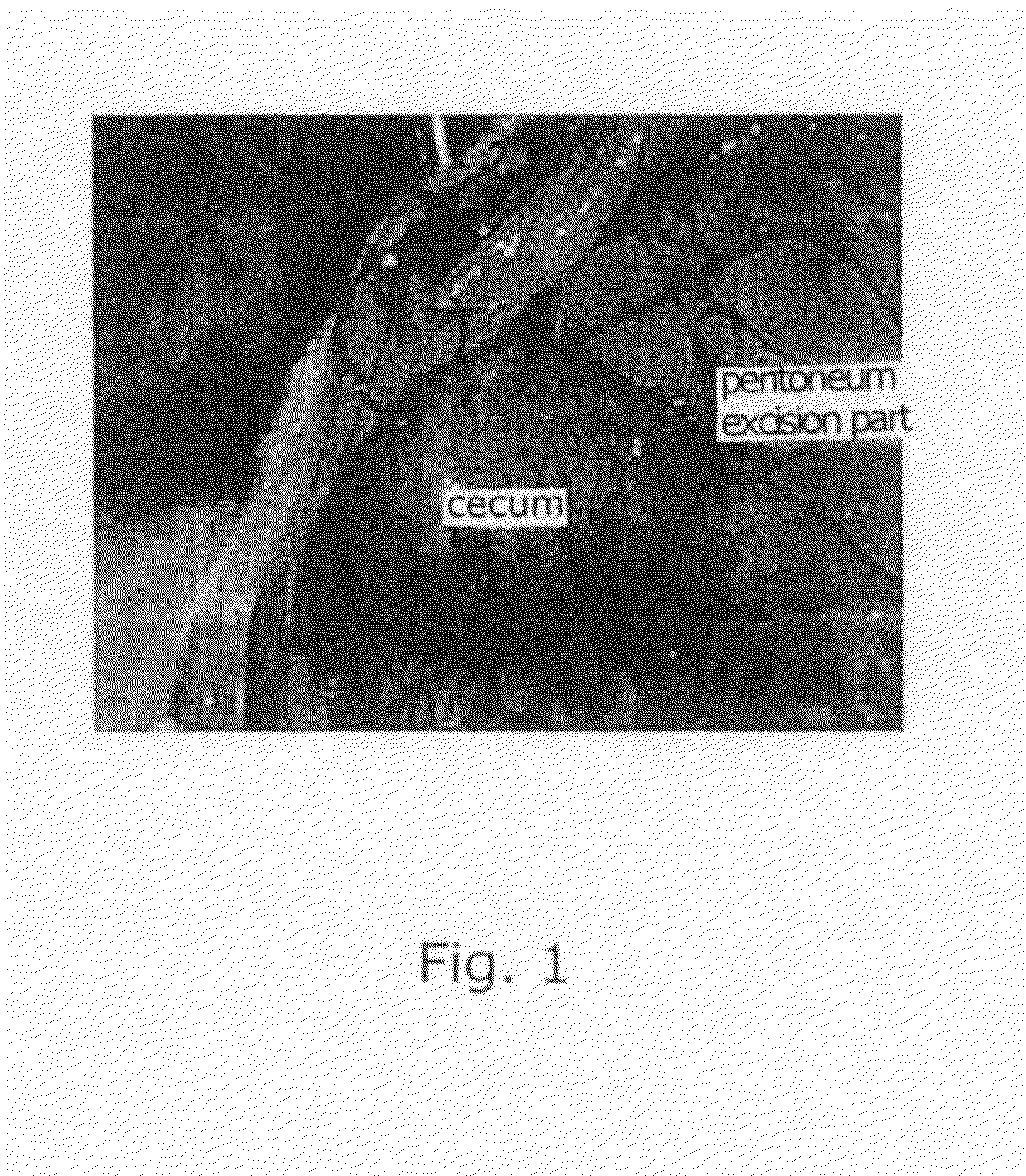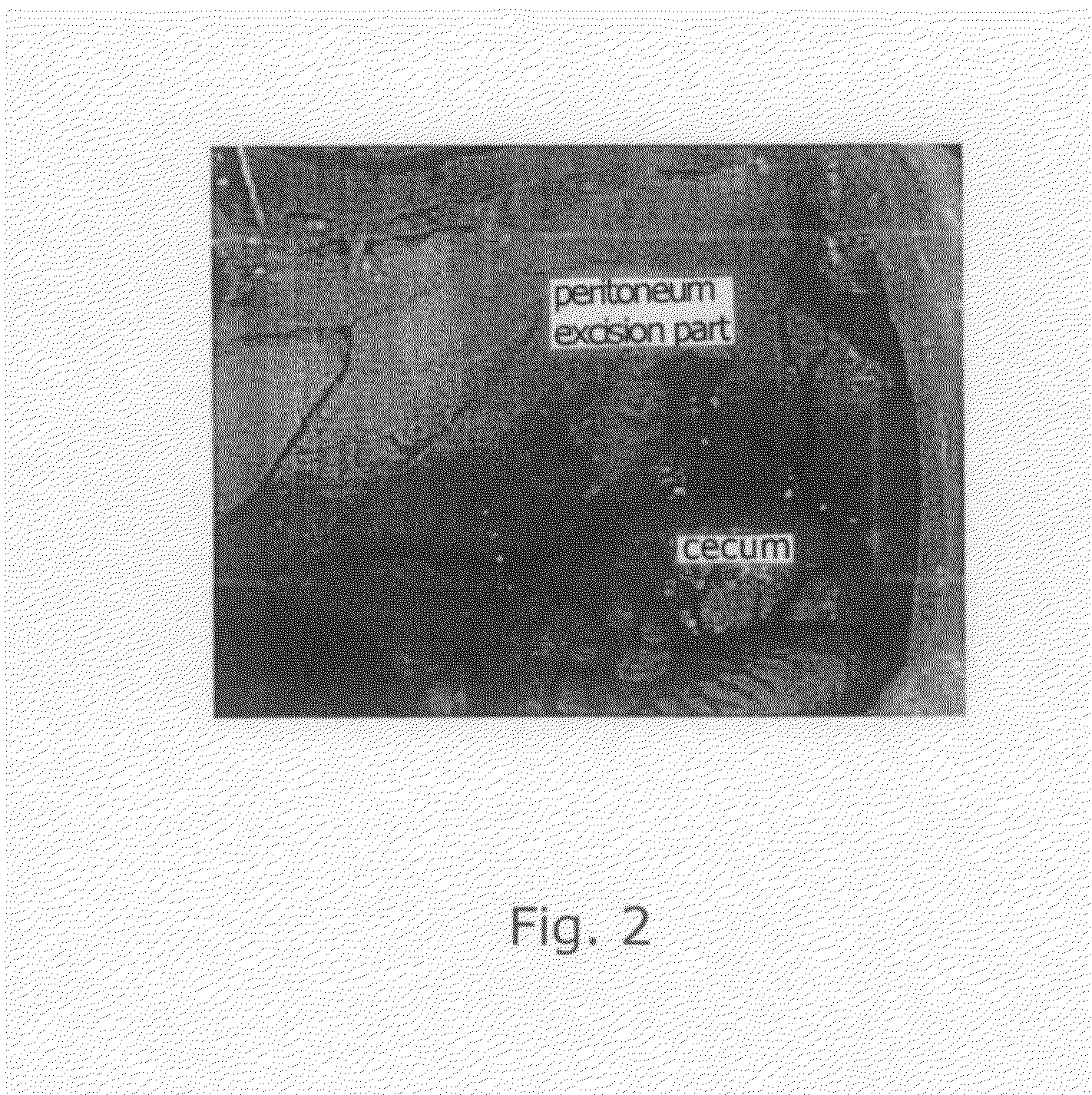Adhesion-Preventing Material And Process For Preventing Adhesion
- Summary
- Abstract
- Description
- Claims
- Application Information
AI Technical Summary
Benefits of technology
Problems solved by technology
Method used
Image
Examples
referential example 1
Water Absorption
[0050]First, the water absorption coefficient of the crosslinked water absorbent poly-y-glutamic acid (referred to hereinafter as PGA-XL) was determined.
[0051]Four PGA-XLs were provided as samples: PGA-XL (0203.15K), PGA-XL (0203.20K) and PGA-XL (0203.25K) which were prepared by crosslinking poly-y-glutamic acid (trade name: Meiji Bio PGA, Meiji Seika Kaisha, Ltd.) using y-ray irradiation with a dose of 15 kGy, 20 kGy and 25 kGy respectively; and powdery PGA-XL (020531M, trade name: Meiji Bio PGA-XL, Meiji Seika Kaisha, Ltd.) crosslinked by y-ray irradiation with a dose of 20 kGy.
[0052]About 0.1 g of each sample was precisely weighed and placed in a one-liter beaker, and 1 liter of deionized water was added thereto. The top of the beaker was covered with aluminum foil and left standing overnight in a low temperature chamber at 5° C. in order to avoid the influence of temperature.
[0053]A two-liter beaker was covered with four layers of gauzes (Japanese Pharmacopoeia; ...
example 1
Adhesion Preventing Effect
[0055]Subsequently, the adhesion preventing effects were measured for the crosslinked water absorbent poly-y-glutamic acid (PGA-XL; the present invention), and the controls a non-crosslinked poly-y-glutamic acid (non-crosslinked PGA) and sodium hyaluronate.
[0056]As the crosslinked water absorbent poly-y-glutamic acid (PGA-XL; the present invention), 020531M among PGA-XLs in Referential Example 1 was used. Poly-y-glutamic acid used as the raw material for preparation of PGA-XL in Referential Example 1 was used directly as the non-crosslinked poly-y-glutamic acid (non-crosslinked PGA). As the sodium hyaluronate, the one available from Meiji Seika Kaisha, Ltd. (molecular weight: 1,200,000) was used.
[0057]Donryu rats (male, 5-7 weeks old) were divided into four groups so that each group was composed of 6-9 rats. For each group, the rats were subjected to laparotomy under general anesthetization (abdominal midline incision) to excise the abdominal wall right abo...
example 2
Adhesion Preventing Effect; Comparison With the Conventional Products
[0063]The adhesion preventing effects of the crosslinked water absorbent poly-y-glutamic acid (PGA-XL; the present invention) and the non-crosslinked poly-y-glutamic acid, sodium hyaluronate, Seprafilm and Interceed as the controls were measured as follows. The adhesion preventing effect of the non-treated group was also measured.
[0064]As the crosslinked water absorbent poly-y-glutamic acid (PGA-XL; the present invention), 020531M among the PGA-XLs in Referential Example 1 was used. Poly-y-glutamic acid used as the raw material for preparation of PGA-XL in Referential Example 1 was used directly as the non-crosslinked poly-y-glutamic acid (non-crosslinked PGA). As the sodium hyaluronate, the one available from Meiji Seika Kaisha, Ltd. (molecular weight: 1,200,000) was used. As the Seprafilm, the one available from Genzyme, USA was used, and as the Interceed, the one available from Ethicon, USA was used.
[0065]Donryu...
PUM
| Property | Measurement | Unit |
|---|---|---|
| Volume | aaaaa | aaaaa |
| Volume | aaaaa | aaaaa |
| Fraction | aaaaa | aaaaa |
Abstract
Description
Claims
Application Information
 Login to View More
Login to View More - Generate Ideas
- Intellectual Property
- Life Sciences
- Materials
- Tech Scout
- Unparalleled Data Quality
- Higher Quality Content
- 60% Fewer Hallucinations
Browse by: Latest US Patents, China's latest patents, Technical Efficacy Thesaurus, Application Domain, Technology Topic, Popular Technical Reports.
© 2025 PatSnap. All rights reserved.Legal|Privacy policy|Modern Slavery Act Transparency Statement|Sitemap|About US| Contact US: help@patsnap.com



